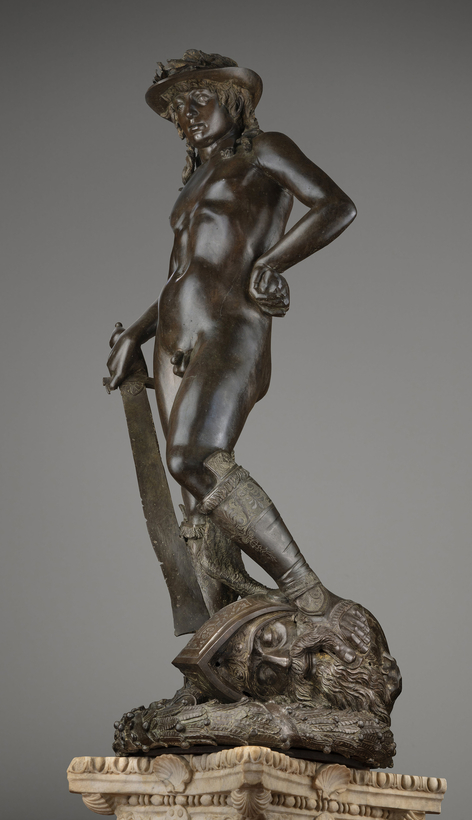The 15th-century Florentine sculptor Donatello is the most out of focus of famous artists. The more we learn about him, it seems, the less clear we are about who he was and why he mattered—even if everyone agrees that he mattered very much. Today, a massive exhibition devoted to Donatello, the first in 40 years, opens in Florence’s Palazzo Strozzi. The renowned specialist Francesco Caglioti has brought together 130 works from the artist’s 50-year career as well as from some of his emulators, aiming to give us not only a comprehensive view but something closer to a unified vision of Donatello and his importance for the art that followed him.
And yet, Donatello’s range of work is so various—in medium, in theme, in style, in basic sensibility—that the exhibition may actually bring home just how compellingly it does not hold together in any conventional sense. His production resists the consistency we expect in a great artist’s style, almost to the point of slipping the bonds of his time, perhaps the greatest feat an artist can perform. The 16th-century historian of art Giorgio Vasari, the first to attempt a comprehensive account of Donatello’s life and work, found himself unsure where to position him in his historical schema, “for he had in himself alone all the parts that are normally distributed one by one among many artists.”

As a maker of half-length Madonnas in terra-cotta and marble, Donatello was that rare thing, a great innovator whose solutions were immediately adopted by his contemporaries as a new truth in art. His Madonnas translate the latent emotional content of Byzantine icons of the Virgin and Christ child into the recognizable intimacies of a mother and her baby. At the same time, they never fall into the anecdotal, and they never feel merely secular. Suddenly bringing into being a sacramental language in the visual vernacular, they afforded a new and wordless path into the mystery of Incarnation, the very heart of the Christian religion. The theologians never caught up.
Donatello’s early marble statue of Saint Mark established, in the first years of the 15th century, a new visual paradigm of civic Christian virtue, and his Saint George translated the medieval knight into the terms of Republican martial valor. The glower of his Jeremiah, simply unknown in ancient statuary, offered a model of prophetic intensity that was to resonate down the centuries from Michelangelo’s David all the way to the seated Lincoln looking out over the National Mall.

There were precedents for his haggard Saint John the Baptist, but nothing in the history of ancient Greco-Roman art or even Christian art could have prepared Donatello’s contemporaries for his wiry and harrowing Mary Magdalene, a Christian Chamunda carved out of poplar wood. I have read many stories of spooky encounters with statues, but I have only ever been spooked by this one. Sustain her gaze if you can.
It is hard to imagine a history of feminism without Donatello’s bronze statue of Judith, sword raised to come down on the neck of the invading rapist Holofernes, a work made for the Medici and then moved to Florence’s town hall, where it soon caused controversy among the authorities, some of whom felt it was less a symbol of republican liberty defeating tyranny than a possibly maleficent image of a woman killing a man. And any history of gay sexuality must pause before Donatello’s bronze David. For more than a century, visitors to the National Museum of Bargello have lingered over details such as the mustache on Goliath’s severed head curling over David’s toes, or the way the wing of the giant’s helmet bends upward to feather-caress the inside of David’s right thigh, up to his groin.
Caglioti, who established that the statue had originally stood in the center of the Medici palace courtyard on a high column, much higher than eye level, will place the David on a support of equivalent height at the Palazzo Strozzi. Presumably, this placement will shift attention from his feet and legs to the cold, sovereign face looking down at us. What new aspect of David—and of Donatello’s art—will emerge then? —Alexander Nagel
“Donatello: The Renaissance” opens today at the Palazzo Strozzi, in Florence
Alexander Nagel is a professor of Renaissance art at New York University


 Discover
Discover